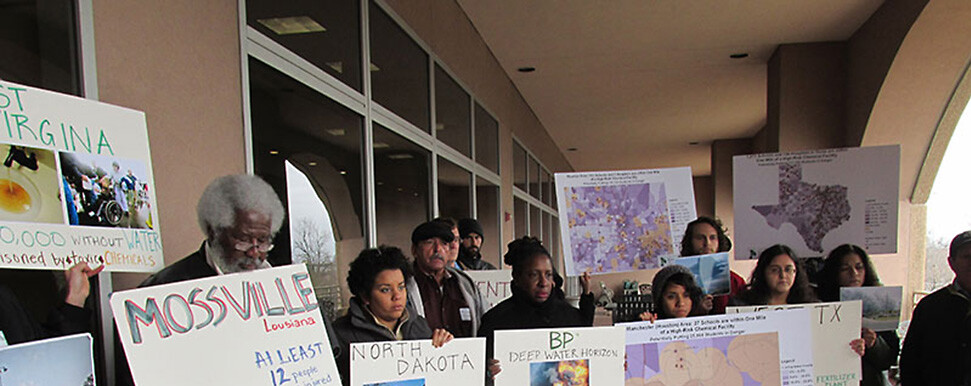
Media
July 22, 2015Community Organizations, Affected Groups Respond to EPA’s Failure to Protect Communities of Color and Marginalized Populations From Toxic Chemical Spills Under the Clean Water Act
EPA’s failure to respond to a 1972 Congressional mandate has jeopardized the health and safety of hundreds of thousands of people, and created conditions which allowed incidents such as the Elk River chemical spill to occur.
July 22, 2015. Washington, DC - Yesterday the Environmental Justice Health Alliance for Chemical Policy Reform (EJHA), a national environmental justice network, joined People Concerned About Chemical Safety and the Natural Resources Defense Council in filing suit against the U.S. Environmental Protection Agency (EPA) for failing to adopt mandatory regulations to protect communities against toxic chemical spills from thousands of industrial facilities.
EPA’s failure to adopt rules to prevent spills from industrial facilities and chemical storage tanks, as required by Congress through the Clean Water Act (CWA) in 1972, created a void of critical oversight and regulation leading to the massive Elk River chemical spill in West Virginia in which drinking water for 300,000 people was poisoned with toxic chemicals. The US Coast Guard National Response Center recorded 1,294 incidents in which hazardous substances reached bodies of water between 2005 and 2014.
“The EPA has ignored Congress’ mandate to address toxic storage tanks for over 40 years,” said Michele Roberts, Co-Coordinator of the EJHA. “Our communities are always the most exposed and the least protected. We demand action, and have no other choice, but to take EPA to court to get it!”
Communities of color and low-income communities are disproportionately exposed to the impacts of hazardous chemical spills. Using EPA’s data, EJHA’s 2014 report,Who’s in Danger? A Demographic Analysis of Chemical Disaster Vulnerability Zones, found that the percentage of Blacks living in vulnerability zones near chemical facilities was 75% greater and the percentage of Latinos in these zones is 60% higher than the US as a whole.
“Hazardous substance spills pose a significant public health threat, particularly to those who live in low-income communities and communities of color,” said Pam Nixon, spokesperson for People Concerned About Chemical Safety. “Had this regulation been enacted in a timely manner, the Elk River spill could have been prevented.”
Eboni Cochran, the Co-Director of REACT, said: "My husband and son go down to the river to explore and fish, but when we heard about the Elk River chemicals reaching Louisville we didn't want our son anywhere near the river. It's a shame that our drinking water is threatened by irresponsible industries, but it’s inexcusable that EPA isn’t protecting us." REACT is an organization of residents living near or at the fence line of chemical facilities and a member of EJHA.
“We need strong prevention regulations for hazardous substance spills. Today we have none,’’ said Richard Moore of Albuquerque, NM, Co-Coordinator of the EJHA. “Without such protections, all communities are at risk—but especially residents of disadvantaged communities. It’s time for EPA to clean up its act.”
“In my experience working with communities from Richmond to West Virginia and beyond, EPA often must be required to protect environmental justice communities,” said Dr. Henry Clark, Executive Director of the West County Toxics Coalition in Richmond, CA. “But today, more than 40 years after EPA was ordered to protect our communities, they still have not taken action.”
The Environmental Justice Health Alliance and its 30+ affiliate organizations are calling on EPA to fulfill its obligation under the Clean Water Act and immediately issue regulations designed to prevent hazardous substances from industrial facilities and storage tanks from spilling and impacting disenfranchised communities.
Available for Comment
Michele Roberts; Co-Coordinator, Environmental Justice Health Alliance for Chemical Policy Reform; (202) 704-7593, mroberts@comingcleaninc.org. Michele can discuss the disproportionate impacts from toxic chemicals on communities of color.
Eric Whalen; Communications Coordinator, Coming Clean; (971) 998-8786, ericwhalen@comingcleaninc.org.
Pam Nixon; President and Spokesperson, People Concerned About Chemical Safety ; (304) 546-7764, pam@chemsafety.org.
